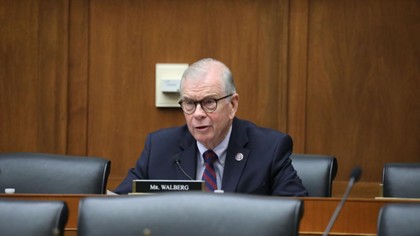Can This New Plan to Fund Schools Help Black Kids Nationwide?
by Quintessa Williams
The state of Mississippi, typically among the states that spend the least per pupil on K-12 education, has officially launched a new student funding formula for its public schools.
The new formula, dubbed the Mississippi Student Funding Formula, went into effect on July 1. Advocates say it could mean better-resourced schools and more tailored educational opportunities, particularly for Black students — who are nearly half of K-12 students in the state — as well as pupils in underserved schools or special needs programs. It could also be a relevant model for other states that want to use their educational budgets to meet diverse student needs effectively.
RELATED: 4 Groups Advocating for Equitable School Funding
However, critics say the effectiveness of these changes will depend on how well the new funding formula addresses the actual costs and needs of educating these students.
A New K-12 Funding Model
The new funding formula, introduced by Republican state senators Rob Roberson, Kent McCarty, and Jensen Owen in April 2024, replaced the Mississippi Adequate Education Program, a funding model that had been in place since 1998.
MSFF is designed to better support the districts most in need by allocating additional funds to those schools, ranging from a few thousand dollars to over $18 million per district, with a total across-the-state increase nearing $240 million.
The formula also aims to provide more resources to underserved districts lacking a substantial tax base — in other words, higher poverty areas with limited ability to fund local schools.
RELATED: For Black Kids, Underfunded Public Schools Are Inequality Factories
The most significant funding increase went to the Jackson Public School District which educates a 95% Black student population. The cash-strapped city, Mississippi’s largest, had its water infrastructure destroyed by a flood in 2022. It has also experienced significant population declines — impacting its tax revenue and increasing its reliance on state funding.
A National Issue
School funding challenges are not unique to Mississippi. Multiple states, including California, Illinois, Texas, and New York, have indicated their struggles with funding resources in underserved districts. And a May 2024 report from the Center for Tax and Budget Accountability suggested that Illinois would not achieve adequate school funding by 2027, a goal promised under the state’s Evidence-Based Funding formula signed into law in 2017.
In Texas, a report from 2023 found that the state had not increased funding since 2019 under their basic allotment formula, which had done little to address the state’s historical chronic underfunding. Furthermore, despite some successes, California’s Local Control Funding Formula has faced additional challenges due to its reported tendency to fund based on enrollment rather than attendance.
A funding model like MSFF, allocates additional funds based on specific criteria such as poverty levels and student needs. That can help level the playing field for many underserved districts nationwide.
RELATED: The Steep Price of School Underfunding
“Money matters in education,” Ivy Morgan, director of P-12 data and analytics for Ed Trust wrote in a 2022 analysis of school funding inequities.
“States’ school funding systems should ensure that districts receive significant additional state and local funding to support students from low-income families and English learners,” Morgan wrote. “In addition, school funding systems should ensure that districts serving high concentrations of students of color receive at least as much state and local funding as other districts.”
MSFF’s approach to using data-driven factors, such as poverty levels, student enrollment, and special needs, provides a more equitable way to allocate resources. Other states can adopt a similar methodology to ensure that funding is distributed based on students’ actual needs rather than historical or arbitrary factors. This focus can be replicated in other states to address the educational needs of diverse student populations more effectively.
How Does This New Funding Formula Work?
MSFF will implement an objective funding formula based on poverty levels, student enrollment, average teacher salaries, special education, and other administrative costs. For example, the formula calculates the base-student cost or the cost to fund each student’s education at $6,995, $40 more than in previous funding models proposed by the Mississippi House earlier this year.
The new formula also includes additional money for school districts that promote career tech programs, and have students with special needs and English language learners. MSFF must also be recalculated every four years and adjusted yearly with an inflation adjuster.
Is This New School Funding Plan Enough?
While the new formula is set to increase funding by $217 million over the previous year, totaling nearly $3 billion, the reported amount still falls $50 million short of what the old MAEP formula would have provided if it had been fully funded, according to the Parent’s Campaign.
A few lawmakers also posed concerns over the weights that added funding. Senators Hob Bryan, a Democrat, and Angela Hill, a Republican, both said the bill has flaws that will cost the state more money down the road. They also said it lacks necessary provisions to ensure school districts have the proper funds for operational costs such as transportation.
A few lawmakers also posed concerns over the weights that added funding. Senators Hob Bryan, a Democrat, and Angela Hill, a Republican, both said the bill has flaws that will cost the state more money down the road. They also said it lacks necessary provisions to ensure school districts have the proper funds for operational costs such as transportation.
Bryan, who authored the just-ended MAEP and voted against MSFF, is concerned the funding formulas will cause districts to prioritize their curriculums to increase funding for each student. He noted that there wasn’t much language about how to pay for bussing students in spread-out school districts. For Black students in rural or sprawling districts, insufficient resources for transportation could hamstring their access to quality education consistently.
Senate Education Chair Dennis DeBar, R-Leakesville, who presented the bill, said that while it isn’t perfect, it is better than lawmakers stalling on necessary reforms to K-12 education funding.
“This bill has the objective formula that we need,” he said. “We were either going to do it here or in a special session. We have worked on this to come up with the best possible formula.”Rep. Roberson, who co-authored the bill, says the long-term effect is to “ensure kids are educated properly” and “increase funding in places that need it.”



